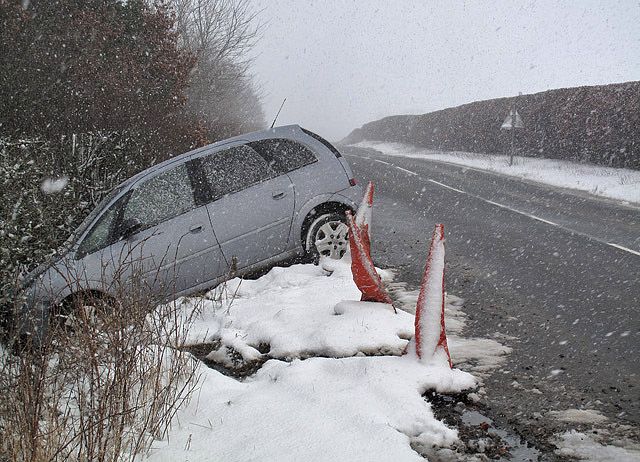Why should you use winter tyres?
There's a lot of talk about winter tyres, but who really needs two sets of tyres and why?
The 7 degree rule - when the temperature drops to 7 degrees celsius or below, standard rubber tyres start to stiffen and become brittle
Stopping distance - there's a marked difference in stopping distances, at lower temperatures, between standard and winter tyres
Minimise skidding - winter tyres give excellent grip, even on ice, minimising the risk of losing control in a skid

Why winter tyres could keep you safe
From Lapland to Luton and Liverpool… in all my years as a motoring journalist few things have been so graphically demonstrated to me as the benefit of winter tyres when I drove a standard Ford Mondeo up to Lapland in the Arctic Circle.
The Mondeo was exactly as it left the factory, except for one critical difference - it was fitted with winter tyres.
We drove in deep freeze conditions, way south of minus 20 Celsius, and many of the diesel cars in our little convoy broke down, if they weren’t using a special winter additive, their fuel quite simply turned to wax.
I vividly remember barrelling down ice covered roads at 40 or 50 mph with no more difficulty or caution than you would on a dry road, but then having to hold onto the bonnet as we changed sides for a driver swap, as otherwise we’d have slipped and fallen over, due to the little grip on the icy surface.
Do winter tyres make a difference?
Tyres get a large part of their grip by being flexible as the car accelerates, brakes and steers; the ingredients mixed into their compound `bite’ into the road surface. At that 7 degree threshold the tyre starts to become stiff, losing that flexibility and with it, a lot of its grip. Winter tyres have more silica and natural rubber in the compound to keep that flexibility.Nothing I’ve tried, seen, or heard about, in all my 30 years as a motoring journalist; including live airbag demonstrations, anti-lock brakes, skid control technologies and even self-controlling vehicles, has left such a deep impression on me as the difference those winter tyres made.
I’ve always thought it misleading to call them winter tyres when more accurately they should be called cold-weather tyres. I say that because `normal’ tyres start to lose their grip at 7 degrees – that’s seven above freezing not seven below, by the way. If you want tragic proof that the cold makes rubber go brittle, think back to the Challenger Space Shuttle which exploded just after launch. The cause was later traced to a rubber gasket which had gone hard from the lower-than-expected temperatures the night before launch; this meant it could not contain the searing rocket gases as it should and indeed would have done, had it retained its flexibility.
Do I need Winter Tyres in the UK?
Well, look at it this way. Insurance figures show that we are six times more likely to be involved in a bump between October and March and while the dark may play a part, the cold plays a bigger one; and that’s a fact. Do we really need them in this country, on our roads where harsh winters are the exception more than the norm? Are winter tyres worth the expense?
Winter tyres are not exclusively designed for snowy and icy conditions. Their properties, mean they grip more effectively in cooler weather, and therefore safer than summer tyres in all weather conditions, as long as the ambient temperature is less than 7degrees celsius.

What are the advantages of Winter Tyres?
The main advantages are giving your car a shorter stopping distance than standard tyres and minimised skidding on ice
It is worthwhile to consider, too, the advantages of using seasonal rubber that is engineered to keep you safe on cold and wet wintry roads. One tyre maker, Continental, says a car on winter tyres will stop from 30 mph on a snow-covered road in 35 metres; on normal tyres the driver would need another 8 metres. That's another two car lengths, or the difference between being safe or slamming into the back of the car which has stopped in front of you; pulling up safely at a Give Way sign or overshooting onto a main road.
Since 2013 Continental has run free sessions at the Mercedes Benz World facility (the old Brooklands race track in Surrey) where drivers can try winter tyres for themselves. It’s surely telling that before the tests, 82% of those taking part had never experienced winter tyres, but afterwards 98% said the tyres were better than expected and 90% said they will probably now buy a set.
How much do Winter Tyres Cost?
With winter tyres starting at around £100 a tyre for a typical family car, there is a strong financial case for comparing tyre prices and making the investment to buy winter tyres. There’s an even bigger safety case – and you don’t have to be driving in the Arctic to get it.